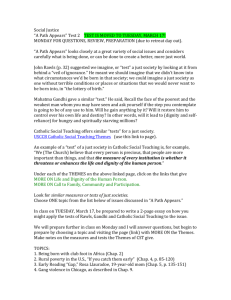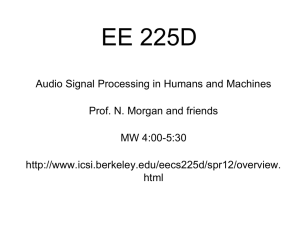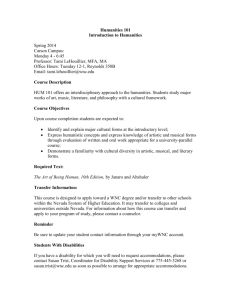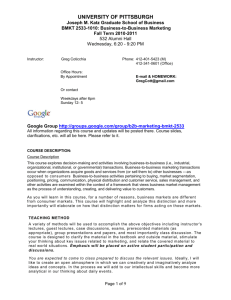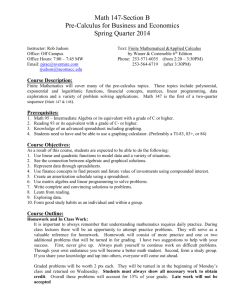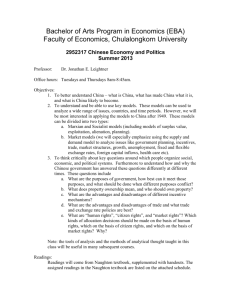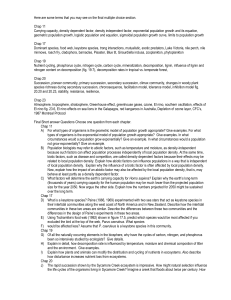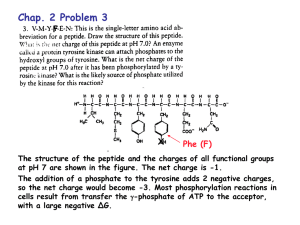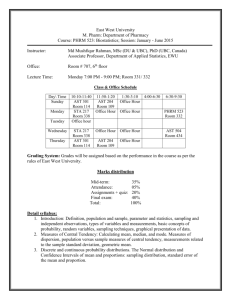Industrial organization
advertisement
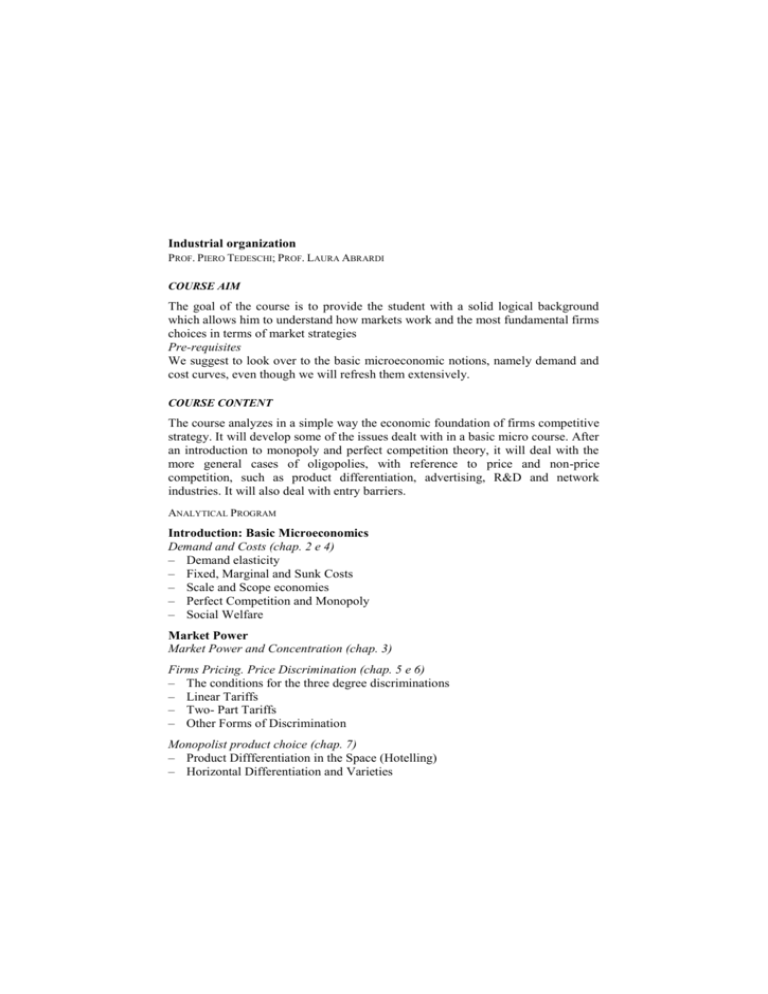
Industrial organization PROF. PIERO TEDESCHI; PROF. LAURA ABRARDI COURSE AIM The goal of the course is to provide the student with a solid logical background which allows him to understand how markets work and the most fundamental firms choices in terms of market strategies Pre-requisites We suggest to look over to the basic microeconomic notions, namely demand and cost curves, even though we will refresh them extensively. COURSE CONTENT The course analyzes in a simple way the economic foundation of firms competitive strategy. It will develop some of the issues dealt with in a basic micro course. After an introduction to monopoly and perfect competition theory, it will deal with the more general cases of oligopolies, with reference to price and non-price competition, such as product differentiation, advertising, R&D and network industries. It will also deal with entry barriers. ANALYTICAL PROGRAM Introduction: Basic Microeconomics Demand and Costs (chap. 2 e 4) – Demand elasticity – Fixed, Marginal and Sunk Costs – Scale and Scope economies – Perfect Competition and Monopoly – Social Welfare Market Power Market Power and Concentration (chap. 3) Firms Pricing. Price Discrimination (chap. 5 e 6) – The conditions for the three degree discriminations – Linear Tariffs – Two- Part Tariffs – Other Forms of Discrimination Monopolist product choice (chap. 7) – Product Diffferentiation in the Space (Hotelling) – Horizontal Differentiation and Varieties – Vertical Differentiation and Quality Choice Oligopoly – Price Strategies Methods for the Economic Analysis (chap. 8 e 10) – Elements of Game Theory – Nash Equilibrium – Dynamic Games and Backwads Induction Basic Models (chap. 8, 9 e 10) – Bertrand and Cournot Models – Capacity Constraints (slides) – Comparative Statics – Strategic Substitutes and Complements – The Order of Moves: The Stackelberg Model Oligopoly – “Anticompetitive” Strategies Entry, Entry Barrier and Predatory behaviour (chap. 11 e 12) – Entry Costs – Entry Barriers, Capacity and Credibility (limit pricing) – The Role of Asymmetric Information Dynamic Models and Collusion (chap. 13 e 14) – Repeated Games and Collusion – Facilitating Factors – The Role of Asymmetric Information – Facilitating Behaviours Horizontal and Vertical Relations The Boundaries of the Firms and Mergers (chap. 15) – Mergers – Horizontal Mergers Vertical Strucutre (chap. 16) – Double Marginalization and Vertical Integration – Two-Part Tariffs – Vertical and Horizontal Externalities with Vertical Separation – Contractual Remedies to the Externalities Oligopoly – Non-Price Strategies Product Differentiation (slides) – Differentiated Oligopoly – The Linear City Model and the Transportation Costs – Product Proliferation and Entry Barriers – Vertical Differentiation and Competition Advertising (chap. 17) – – – – – Switching Costs Informative and Persuasive Advertising Mrket Structure and Advertising Expenditure (Dorfman – Steiner) Information and Advertising Avertising and Competition Research and Development (chap. 18) – R&D Incentive sto Invest and Market Structure – Patents – Technological and strategic uncertainty (slides) – Long Run Dynamic Competition (slides) Net and Regulated Industries Competition in net industries (chap. 19) – Network Externalities and Monopolization – Adopting Innovations – Compatibility among Networks Monopoly and Regulated Industries (slides) – Monopolistic (network) Industries Regulation – The Notion of essential facility – Access to Networks READING LIST L. PEPALL-D. RICHARDS-G. NORMAN, Industrial Organization, Blackwell, 2009. The slides use by the teachers, available in the page of prof. Piero Tedeschi, are integral part of the references. TEACHING METHOD Classes are very important also for the final exam. Teachers are available for students who wish to organize groups for developing specific subject of the course. ASSESSMENT METHOD A written exam, with theory and simple exercises.

